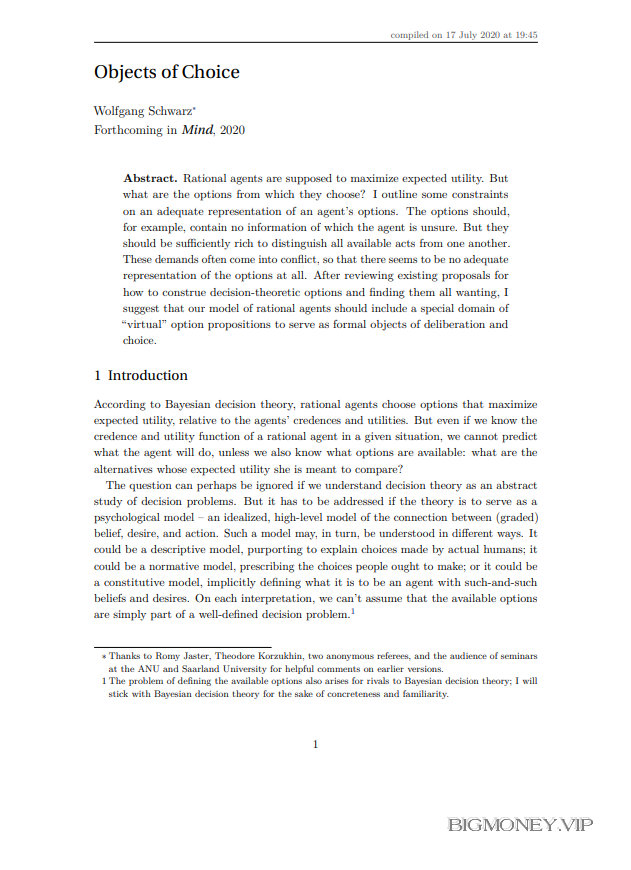Objects of Choice by Wolfgang Schwarz

So what are the options available to an agent in a given decision situation? The naive
answer is that the options are simply the acts the agent can perform. I think this almost
correct. But the acts must be represented in a suitable way. If you don’t know that the
lottery ticket you are buying is a losing ticket, it would be wrong to represent the chosen
act as buying a losing ticket.
Intuitively, an adequate representation of an available act should not reveal anything
about the world of which the agent is unsure (such as whether the ticket is a losing
ticket). However, the representation should also be strong enough to distinguish the act
from any other act the agent could choose. As we will see, these demands can come into
conflict.
Another challenge arises from the supposed “subjectivity” of decision theory. Assume
an agent believes her options are A and B, while in fact they are A and C; each of B
and C has greater expected utility than A. Decision theory, as a theory of subjective
rationality, arguably should not predict (or prescribe) that the agent does C, given that
she is not aware that C is an option. But we also don’t want to predict (or prescribe)
that the agent does B, which is not in her power.
I will lay out these problems more carefully in the next few sections, in the course of
proposing some general constraints on an agent’s options. I will then discuss two attractive
ideas for how to construe decision-theoretic options. The first identifies options with
inner acts of trying, intending, or deciding to perform a certain act. The second construes
options as probability measures over a range of acts. I will argue that neither proposal is
fully satisfactory. My own proposal will draw on both of these earlier proposals. In short,
I suggest that decision-theoretic models should postulate a primitive domain of option
propositions to serve as objects of practical deliberation. Every decision an agent can
make, and therefore also every act she can perform, corresponds to an option proposition.
But that proposition does not transparently describe or represent the decision, in physical
or functional terms. It does not transparently describe or represent anything at all.
2 What we can do
Let’s start with the simple and intuitive idea that an agent’s options are the acts she can
perform. As I said, I think this is almost correct – we only need to ensure that these acts
are represented in a suitable way. First, however, we need to clarify what we mean by
‘act’ and ‘can’.
Ability modals are notoriously polysemous (see e.g. [Kratzer 1981]). There’s a sense in
which I can play the piano even when there’s no piano around; there’s a sense in which
I can’t accept an invitation if I have conflicting commitments; there’s a sense in which




